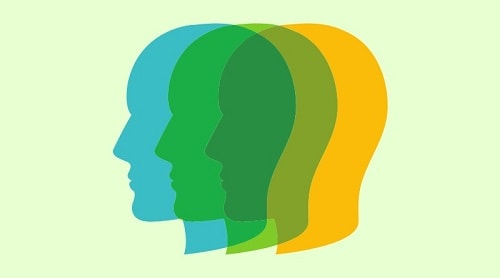NMAT Social Science Practice Test

Directions: Choose the letter that corresponds to the correct answer.
1. The study of the interrelationships among people in their spatial setting and physical environment is known as:
A. environmental psychology
B. human ecology
C. epidemiology
D. anthropology
2. The process of interpreting and attaching meaning to experience is called:
A. perception
B. encoding
C. elaboration
D. chunking
3. A complex of neurological disabilities that inhibit symbol recognition and the orderly processing and assimilation of language is
A. symbol intrusion
B. dysnomia
C. dyslexia
D. symbol reversal
4. Using a higher frequency behavior as a reinforcer for a less frequent behavior is an example of
A. the contiguity principle
B. the Premack principle
C. the principle of primacy
D. shaping
5. A child listens to his mother say the word “dog” and tries to imitate the sound his mother makes. This would illustrate which of the following theories of language development?
A. Biological
B. Psychoanalytic
C. Constructive
D. Social learning
6. Joe and Brynn are in the same Spanish class. During the final exam, Joe gets a perfect score by copying Brynn’s answers. According to Merton’s anomie theory of deviance, Joe is a(n)
A. rebel
B. ritualist
C. innovator
D. retreatist
7. The most common form of word fluency disorder is
A. stuttering
B. echolalia
C. dyslexia
D. stagnation
8. According to Piagetian theory, which of the following concepts is LEAST related to the other four?
A. Adaptation
B. Assimilation
C. Accommodation
D. Schema
9. A teacher who is sensitive about the nature of the posters she displays in her class and is concerned that the posters reflect all of her students’ experiences is adapting curriculum through attention to
A. content
B. context
C. modality
D. ecology
10. The fact that a child in the pre-operational stage of development tends to focus on one perceptual aspect of an event to the exclusion of others demonstrates
A. centration
B. transductive logic
C. egocentrism
D. seriation
11. Research shows that high achievers typically attribute success to
A. internal causes
B. external causes
C. varying causes
D. Attribution depends on the subject
12. A negative attitude toward an entire category of people is known as
A. prejudice
B. racism
C. exploitation
D. discrimination
13. A student with an internal locus of control would most likely attribute his/her success on a task to
A. luck
B. effort
C. the tasks difficulty
D. the fairness of the teacher
14. Sheila decided to cook dessert for Thanksgiving. She is a little nervous, so she rehearses what she should do first, then the next step, then the next step—all the way to the last step. Sheila is strengthening her
A. procedural memory
B. episodic memory
C. semantic memory
D. event memory
15. The need to excel in learning tasks while balancing the need to avoid failure is
A. attribution need
B. competitive need
C. completeness need
D. achievement need
16. A primary need is
A. one currently active
B. one of the needs experienced in infancy and early childhood
C. necessary for survival
D. a growth need
17. People who work at a specific task are more likely to become highly skilled and perform the job with maximum efficiency. This is the rationale for which of the following characteristics of a bureaucracy?
A. Division of labor
B. Hierarchy of authority
C. Written rules and regulations
D. Employment based on technical qualifications
18. Self-imposed starvation in which the individual refuses to eat or eats practically nothing is termed
A. bulimia
B. self-denial
C. dysmorphia
D. anorexia
19. A student who has memories of general facts and concepts would be said to have
A. didactic knowledge
B. process knowledge
C. semantic memory
D. eidetic memory
20. When students have multiple needs operating at one time, Maslow would suggest that the students will
A. attempt to meet all of the needs simultaneously
B. select their favorite need to satisfy first
C. respond to the need most easily met
D. respond to a hierarchy and priority of human needs
View answer key or go back to NMAT reviewer main page
Written by FilipiKnow
in Reviewers
FilipiKnow
FilipiKnow strives to ensure each article published on this website is as accurate and reliable as possible. We invite you, our reader, to take part in our mission to provide free, high-quality information for every Juan. If you think this article needs improvement, or if you have suggestions on how we can better achieve our goals, let us know by sending a message to admin at filipiknow dot net
Copyright Notice
All materials contained on this site are protected by the Republic of the Philippines copyright law and may not be reproduced, distributed, transmitted, displayed, published, or broadcast without the prior written permission of filipiknow.net or in the case of third party materials, the owner of that content. You may not alter or remove any trademark, copyright, or other notice from copies of the content. Be warned that we have already reported and helped terminate several websites and YouTube channels for blatantly stealing our content. If you wish to use filipiknow.net content for commercial purposes, such as for content syndication, etc., please contact us at legal(at)filipiknow(dot)net
